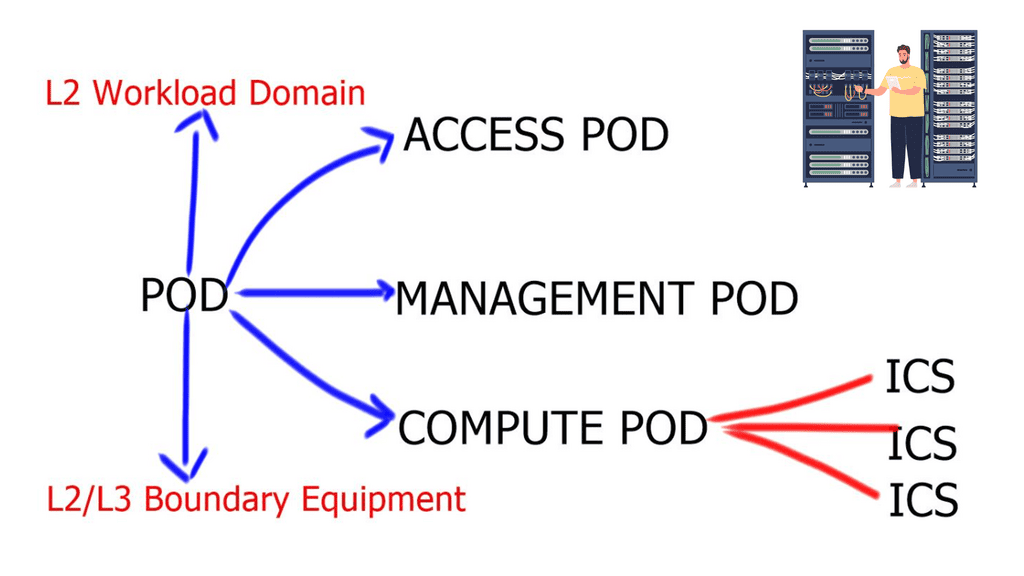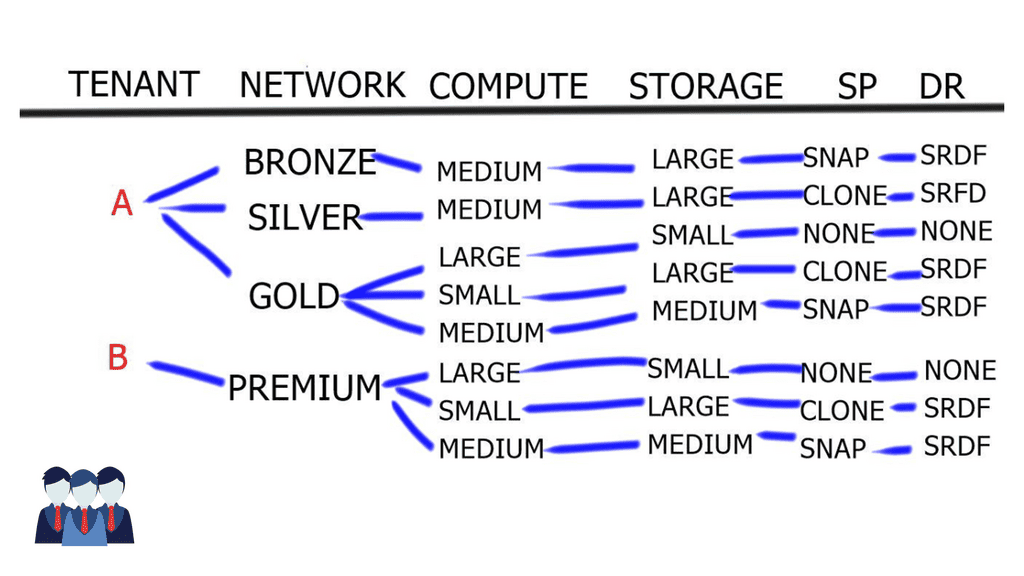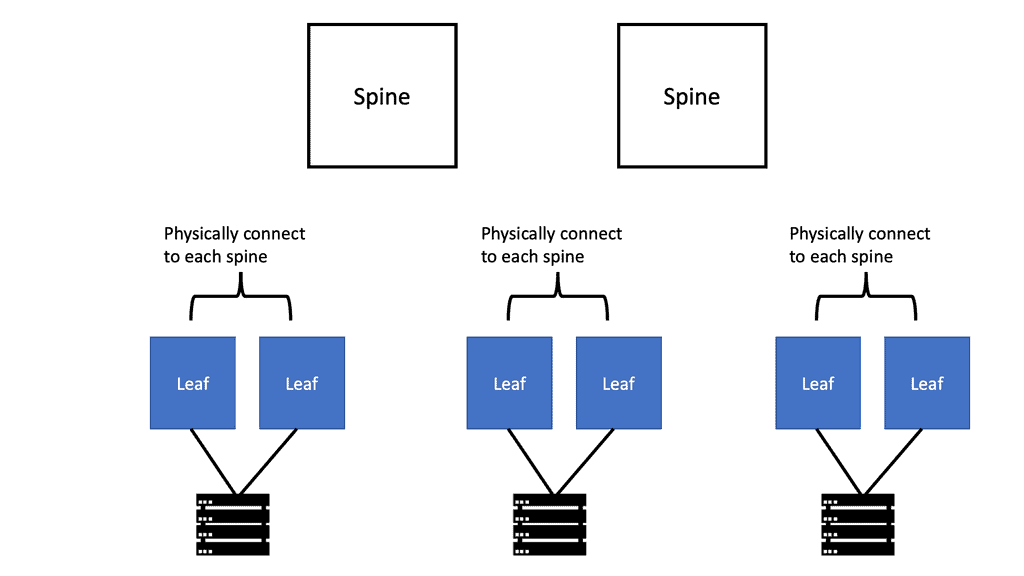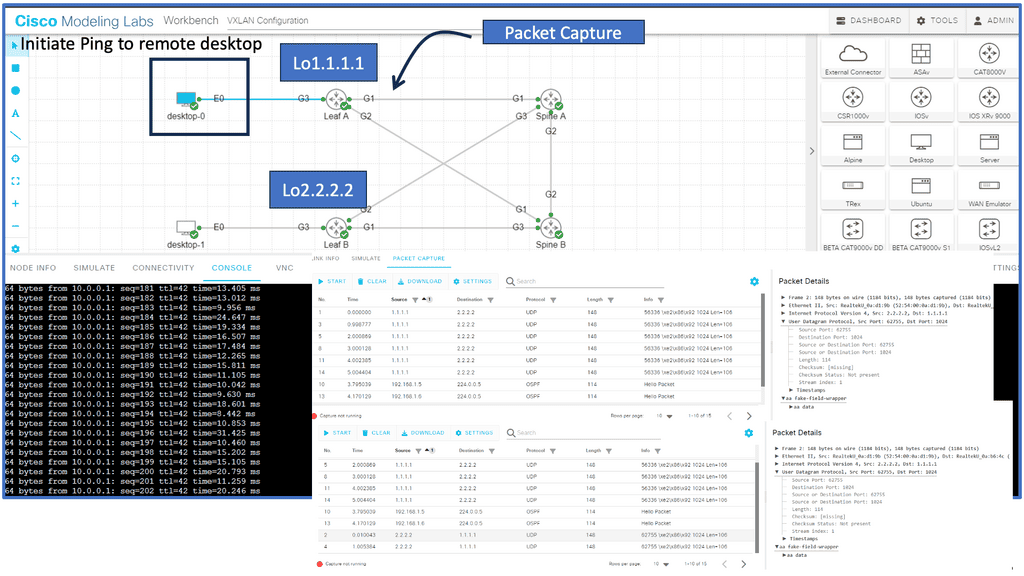Cloud Data Centers
In today's digital age, where data is generated and consumed at an unprecedented rate, the need for efficient and scalable data storage solutions has become paramount. Cloud data centers have emerged as a groundbreaking technology, revolutionizing the way businesses and individuals store, process, and access their data. This blog post delves into the world of cloud data centers, exploring their inner workings, benefits, and their impact on the digital landscape.
Cloud data centers, also known as cloud computing infrastructures, are highly specialized facilities that house a vast network of servers, storage systems, networking equipment, and software resources. These centers provide on-demand access to a pool of shared computing resources, enabling users to store and process their data remotely. By leveraging virtualization technologies, cloud data centers offer unparalleled flexibility, scalability, and cost-effectiveness.
Scalability and Elasticity: One of the most significant advantages of cloud data centers is their ability to quickly scale resources up or down based on demand. This elastic nature allows businesses to efficiently handle fluctuating workloads, ensuring optimal performance and cost-efficiency.
Cost Savings: Cloud data centers eliminate the need for upfront investments in hardware and infrastructure. Businesses can avoid the expenses associated with maintenance, upgrades, and physical storage space. Instead, they can opt for a pay-as-you-go model, where costs are based on usage, resulting in significant savings.
Enhanced Reliability and Data Security: Cloud data centers employ advanced redundancy measures, including data backups and geographically distributed servers, to ensure high availability and minimize the risk of data loss. Additionally, they implement robust security protocols to safeguard sensitive information, protecting against cyber threats and unauthorized access.
Enterprise Solutions: Cloud data centers offer a wide range of enterprise solutions, including data storage, virtual machine provisioning, software development platforms, and data analytics tools. These services enable businesses to streamline operations, enhance collaboration, and leverage big data insights for strategic decision-making.
Cloud Gaming and Streaming:The gaming industry has witnessed a transformative shift with the advent of cloud data centers. By offloading complex computational tasks to remote servers, gamers can enjoy immersive gaming experiences with reduced latency and improved graphics. Similarly, cloud data centers power streaming platforms, enabling users to access and enjoy high-quality multimedia content on-demand.
Cloud data centers have transformed the way we store, process, and access data. With their scalability, cost-effectiveness, and enhanced security, they have become an indispensable technology for businesses and individuals alike. As we continue to generate and rely on vast amounts of data, cloud data centers will play a pivotal role in driving innovation, efficiency, and digital transformation across various industries.
Matt Conran
Highlights: Cloud Data Centers
Data center network virtualization
NetworkVirtualization of networks plays a significant role in designing data centers, especially those for use in the cloud space. There is not enough space here to survey every virtualization solution proposed or deployed (such as VXLAN, nvGRE, MPLS, and many others); a general outline of why network virtualization is essential will be considered in this section.
A primary goal of these technologies is to move control plane state from the core to the network’s edges. With VXLAN, a Layer 3 fabric can be used to build Layer 2 broadcast domains. For each ToR, spine switches only know a few addresses, reducing the state carried in the IP routing control plane to a minimum.
Tunneling will affect visibility to quality of service and other traffic segregation mechanisms within the spine or the data center core, which is the first question relating to these technologies. In theory, tunneling traffic edge-to-edge could significantly reduce the state held at spine switches (and perhaps even at ToR switches). Still, it could sacrifice fine-grained control over packet handling.
Tunnel Termination
In addition, where should these tunnels be terminated? The traffic flows across the fabric can be pretty exciting if they are terminated in software running on the data center’s compute resources (such as in a user VM space, the software control space, or hypervisor space). In this case, traffic is threaded from one VLAN to another through various software tunnels and virtual routing devices. However, the problem of maintaining and managing hardware designed to support these tunnels can still exist if these tunnels terminate on either the ToR or in the border leaf nodes.
Modular Data Center Design
A modular data center design consists of several prefabricated modules or a deployment method for delivering data center infrastructure in a modular, quick, and flexible process. The modular building block design approach is necessary for large data centers as “Hugh domains fail for a reason” – “Russ White.” For the virtual data center, these modular building blocks can be referred to as “Points of Delivery,” also known as pods, and “Integrated Compute Stacks,” also known as ICSs, such as VCE Vblock and FlexPod.
- Example: Cisco ACI
You could define a pod as a modular unit of data center components ( pod data center ) that support incremental build-out of the data center. They are the basis for modularity within the cloud data center and are the basis of design in the ACI network. Based on spine leaf architecture. To scale a pod and expand incrementally, designers can add Integrated Compute Stacks ( ICS ) within a pod. ICS is a second, smaller unit added as a repeatable unit.
Before you proceed, you may find the following posts helpful:
- Container Networking
- OpenShift Networking
- OpenShift SDN
- Kubernetes Networking 101
- OpenStack Architecture
Modular data center design. Key Modular Building Blocks Discussion Points: |
|
Back to basics with a data center design
Data centers were significantly dissimilar from those just a short time ago. Infrastructure has moved from traditional on-premises physical servers to virtual networks. These virtual networks must seamlessly support applications and workloads across physical infrastructure pools and multi-cloud environments. Generally, a data center consists of the following core infrastructure components: network infrastructure, storage infrastructure, and compute infrastructure.
Modular Data Center Design
Scalability:
One of the key advantages of cloud data centers is their scalability. Unlike traditional data centers that require physical infrastructure upgrades to accommodate increased storage or processing needs, cloud data centers can quickly scale up or down based on demand. This flexibility allows businesses to adapt quickly to changing requirements without incurring significant costs or disruptions to their operations.
Efficiency:
Cloud data centers are designed to maximize energy consumption and hardware utilization efficiency. By consolidating multiple servers and storage devices into a centralized location, cloud data centers reduce the physical footprint required to store and process data. This minimizes the environmental impact and helps businesses save on space, power, and cooling costs.
Reliability:
Cloud data centers are built with redundancy in mind. They have multiple power sources, network connections, and backup systems to ensure uninterrupted service availability. This high level of reliability helps businesses avoid costly downtime and ensures that their data is always accessible, even in the event of hardware failures or natural disasters.
Security:
Data security is a top priority for businesses, and cloud data centers offer robust security measures to protect sensitive information. These facilities employ various security protocols such as encryption, firewalls, and intrusion detection systems to safeguard data from unauthorized access or breaches. Cloud data centers often comply with industry-specific regulations and standards to ensure data privacy and compliance.
Cost Savings:
Cloud data centers offer significant cost savings compared to maintaining an on-premises data center. With cloud-based infrastructure, businesses can avoid upfront capital expenditures on hardware and maintenance costs. Instead, they can opt for a pay-as-you-go model, where they only pay for the resources they use. This scalability and cost efficiency make cloud data centers attractive for businesses looking to reduce IT infrastructure expenses.
The general idea behind these two forms of modularity is to have consistent, predictable configurations with supporting implementation plans that can be rolled out when a predefined performance limit is reached. For example, if pod-A reaches 70% capacity, a new pod called pod-B is implemented precisely. The critical point is that the modular architecture provides a predictable set of resource characteristics that can be added as needed. This adds numerous benefits to fault isolation, capacity planning, and ease of new technology adoption. Special service pods can be used for specific security and management functions.

Pod Data Center
No two data centers will be the same with all the different components. However, a large-scale data center will include some key elements: applications, servers, storage, networking such as load balancers, and other infrastructure. These can be separated into different pods. A pod is short for Performance Optimized Datacenter and has been used to describe several different data center enclosures. Most commonly, these pods are modular data center solutions with a single-aisle, multi-rack enclosure with built-in hot- or cold-aisle containment.
- A key point: Pod size
The pod size is relative to the MAC addresses supported at the aggregation layer. Different vNICs require unique MAC addresses, usually 4 MAC addresses per VM. For example, the Nexus 7000 series supports up to 128,000 MAC addresses, so in a large POD design, 11,472 workloads can be enabled, translating to 11,472 VM – 45,888 MAC addresses. Sharing VLANS among different pods is not recommended, and you should try to filter VLANs on trunk ports to stop unnecessary MAC address flooding. In addition, spanning VLANs among PODs would result in an end-to-end spanning tree, which should be avoided at all costs.
Pod data center and muti-tenancy
Within these pods and ICS stacks, multi-tenancy and tenant separation is critical. A tenant is an entity subscribing to cloud services and can be defined in two ways. First, a tenant’s definition depends on its location in the networking world. For example, a tenant in the private enterprise cloud could be a department or business unit. However, a tenant in the public world could be an individual customer or an organization.
Each tenant can have differentiating levels of resource allocation within the cloud. Cloud services can range from IaaS to PaaS, ERP, SaaS, and more, depending on the requirements. Standard service offerings fall into four tiers: Premium, Gold, Silver, and Bronze. In addition, recent tiers, such as Copper and Palladium, will be discussed in later posts.
It does this by selecting a network container that provides them with a virtual dedicated network ( within a shared infrastructure ). The customer then goes through a VM sizing model, storage allocation/protection, and the disaster recovery tier.

Example of a tiered service model
Component | Gold | Silver | Bronze |
Segmentation | Single VRF | Single VRF | Single VRF |
Data recovery | Remote replication | Remote replicaton | None |
VLAN | Mulit VLAN | Multi VLAN | Single VLAN |
Service | FW and LB service | LB service | None |
Data protection | Clone | Snap | None |
Bandwidth | 40% | 30% | 20% |
Modular building blocks: Network container
The type of service selected in the network container will vary depending on application requirements. In some cases, applications may require several tiers. For example, a Gold tier could require a three-tier application layout ( front end, application, and database ). Each tier is placed on a separate VLAN, requiring stateful services ( dedicated virtual firewall and load balancing instances). Other tiers may require a shared VLAN with front-end firewalling to restrict inbound traffic flows.
Usually, a tier will use a single individual VRF ( VRF-lite ), but the number of VLANs will vary depending on the service level. For example, a cloud provider offering simple web hosting will provide a single VRF and VLAN. On the other hand, an enterprise customer with a multi-layer architecture may want multiple VLANs and services ( load balancer, Firewall, Security groups, cache ) for its application stack.
Modular building blocks: Compute layer
The compute layer is related to the virtual servers and the resources available to the virtual machines. Service profiles can vary depending on the size of the VM attributes, CPU, memory, and storage capacity. Service tiers usually have three compute workload sizes at a compute layer, as depicted in the table below.
Pod data center: Example of computing resources
Component | Large | Medium | Small |
vCPU per VM | 1 vCPU | 0.5 vCPU | 0.25 vCPU |
Cores per CPU | 4 | 4 | 4 |
VM per CPU | 4 VM | 16 VM | 32 VM |
VM per vCPU oversubscription | 1:1 ( 1 ) | 2:1 ( 0.5 ) | 4:1 ( 0.25 ) |
RAM allocation | 16 GB dedicated | 8 GB dedicated | 4 GB shared |
Compute profiles can also be associated with VMware Distributed Resource Scheduling ( DRS ) profiles to prioritize specific classes of VMs.
Modular building blocks: Storage Layer
This layer relates to storage allocation and the type of storage protection. For example, a GOLD tier could offer three tiers of RAID-10 storage using 15K rpm FC, 10K rpm FC, and SATA drives. While a BRONZE tier could offer just a single RAID-5 with SATA drives
Summary: Cloud Data Centers
In the rapidly evolving digital age, data centers play a crucial role in storing and processing vast amounts of information. Traditional data centers have long been associated with high costs, inefficiencies, and limited scalability. However, a new paradigm has emerged – modular data center design. This innovative approach offers many benefits, revolutionizing how we think about data centers. This blog post explored the fascinating world of modular data center design and its impact on the industry.
Understanding Modular Data Centers
Modular data centers, also known as containerized data centers, are self-contained units that house all the essential components required for data storage and processing. These pre-fabricated modules are built off-site and can be easily transported and deployed. The modular design encompasses power and cooling systems, racks, servers, networking equipment, and security measures. This plug-and-play concept allows for rapid deployment, flexibility, and scalability, making it a game-changer in the data center realm.
Benefits of Modular Data Center Design
Scalability and Flexibility
One key advantage of modular data center design is its scalability. Traditional data centers often face challenges in accommodating growth or adapting to changing needs. However, modular data centers offer the flexibility to scale up or down by simply adding or removing modules as required. This modular approach allows organizations to seamlessly align their data center infrastructure with their evolving business demands.
Cost Efficiency
Modular data center design brings notable cost advantages. Traditional data centers often involve significant upfront investments in construction, power distribution, cooling infrastructure, etc. In contrast, modular data centers reduce these costs by utilizing standardized modules that are pre-engineered and pre-tested. Additionally, scalability ensures that organizations only invest in what they currently need, avoiding unnecessary expenses.
Rapid Deployment
Time is of the essence in today’s fast-paced world. Traditional data centers can design, build, and deploy for months or even years. On the other hand, modular data centers can be rapidly deployed within weeks, thanks to their pre-fabricated nature. This accelerated deployment allows organizations to meet critical deadlines, swiftly respond to market demands, and gain a competitive edge.
Enhanced Efficiency and Performance
Optimized Cooling and Power Distribution
Modular data centers are designed with efficiency in mind. They incorporate advanced cooling technologies, such as hot and cold aisle containment, precision cooling, and efficient power distribution systems. These optimizations reduce energy consumption, lower operational costs, and improve performance.
Simplified Maintenance and Upgrades
Maintaining and upgrading traditional data centers can be a cumbersome and disruptive process. Modular data centers simplify these activities by providing a modularized framework. Modules can be easily replaced or upgraded without affecting the entire data center infrastructure. This modularity minimizes downtime and ensures continuous operations.
Conclusion:
In conclusion, modular data center design represents a significant leap forward in data centers. Its scalability, cost efficiency, rapid deployment, and enhanced efficiency make it a compelling choice for organizations looking to streamline their infrastructure. As technology continues to evolve, modular data centers offer the flexibility and agility required to meet the ever-changing demands of the digital landscape. Embracing this innovative approach will undoubtedly shape the future of data centers and pave the way for a more efficient and scalable digital infrastructure.



